-
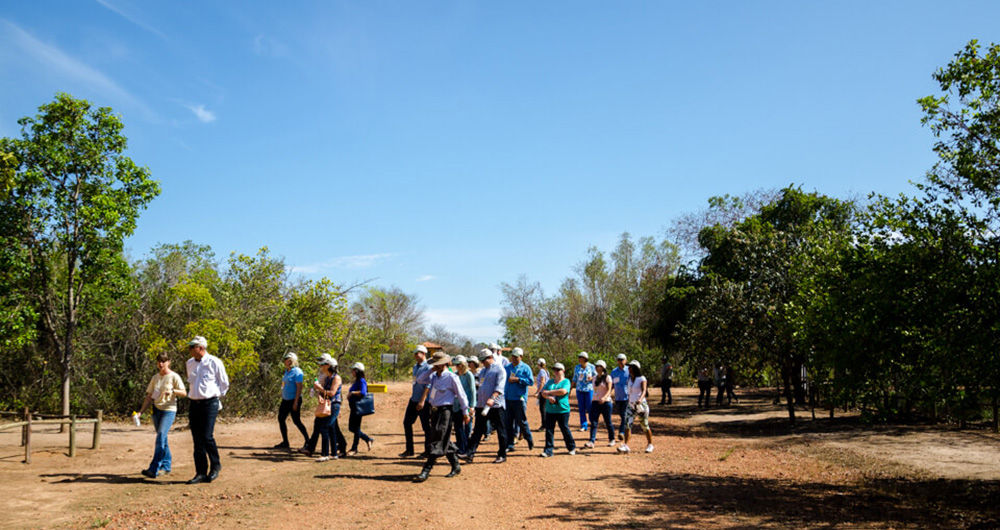
2016 was special for the Fioravante Galvani Park. The year marked the 10th anniversary of the unit, which is the first environmental conservation and education center of Western Bahia, in the city of Luís Eduardo Magalhães (BA). In this decade of history, the park has become a reference in the study and preservation of the Brazilian cerrado and in environmental education activities that spread information about this biome among students, teachers, researchers and the community in general. And the initiative has already achieved a lot over this time. Since its foundation, the park has already produced more than 200,000 seedlings of 25 species; it was the "cradle" of 69 animals and received thousands of students and teachers who, in visits, workshops and walks, were encouraged to look at the Cerrado in a different way.
I think our main achievement in these 10 years was to raise awareness about the environment and the importance of the cerrado, something that was not discussed locally. It was the park that promoted this debate and broadened the discussion on the environmental and ecological importance of this biome. They started talking about the environment in a region that is essentially agricultural and was not accustomed to seeing this activity from different angles.
Márcia Andaluza Xavier, Park Manager
To celebrate such important date, several actions and events were held during the year:
Park Anniversary The celebration of the 10th anniversary gathered people who were part of the park's history: partners, teachers, technicians, businessmen, trade associations, managers, students, representatives of public agencies and other professionals who helped Galvani and the Lina Galvani Institute build the park we had conceived. The special day had a guided tour, group dynamics, speeches and a tributes to the people and institutions that worked to create the park.
The Lina Galvani Institute believes in the strength of joint construction. The anniversary event was important to bring together people who are aware of their role in the world and in building the next 10 years of the park. We were really honored by the presence of these partners planning the future of the park with us.
Cecília Galvani, Lina Galvani Institute Director
The Fioravante Galvani park and I are part of the wealth of the Cerrado The activity was carried out in ten schools of Luís Eduardo Magalhães, in partnership with the local department of education. It investigated the memories and feelings that children and teachers have about the values inspired by the park. Additionally, the park was honored in the Independence Day parade.
“The Cerrado through children's lenses” The photography contest involved students from the ninth grade of the municipal schools. It invited them to turn their gaze to the richness of the cerrado and realize the importance of preserving the species of this biome. In a vote with over 3,200 voters, the winner was student Luis Felipe Streit, of the São Paulo Municipal School.
Bahia Farm Show As part of the celebrations of the 10th anniversary, the park had its own booth in one of the most important agribusiness trade shows in Brazil, in May. There, the staff welcomed the visitors to tell more about the history of the park and its importance to the region. We also promoted activities such as art and education workshops for children, photo exhibition, environmental education, and distribution of seedlings of native cerrado trees. In total, 500 seedlings were donated, including tabebuias (pink, white and yellow), peppertrees, cajuzinho do cerrado, tamboril, peroba do cerrado and angico preto.
A QUESTION FOR...
Mariângela Pinho, veterinarian and one of the first to conceive the Fioravante Galvani Park
What are the main achievements of the park in its first decade?
I believe that the main achievement is the network of partners we formed. We have also succeeded in spreading the idea that the park belongs to the entire community, not just to the Galvani company or to the Lina Galvani Institute. That the work of the park goes far beyond the 20 hectares of land it owns. It unites small business owners in favor of the same cause; it appeals to farmers, who started looking for native seedlings to recover forest areas on their farms; it reaches schools, which have become partners in various activities; and it reaches the environmental and public bodies that have supported us and have always been strong partners. Finally, the park has become an open institution that has built a network and that makes people feel they belong in here: "The park is ours!".
-
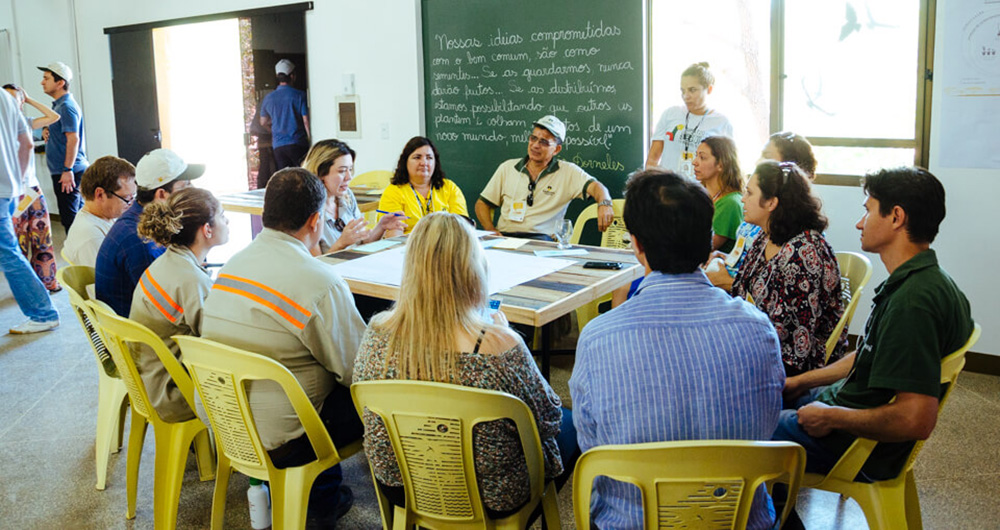
In its 10th anniversary, the Fioravante Galvani Park took a new step towards the future. With the help of Move consultancy firm, the park outlined its strategic planning and made plans for the coming years. During 2016, the experts, together with the park and Lina Galvani Institute teams, carried out an in-depth analysis of the park's organizational performance and model in order to find ways to improve its performance and sustainability. New mission, vision, target audiences and strategic services were outlined.
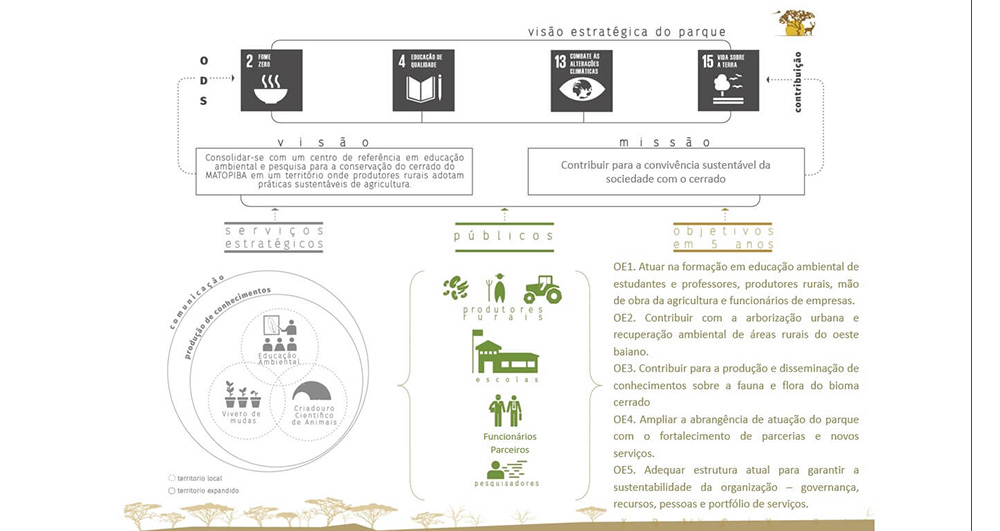
-
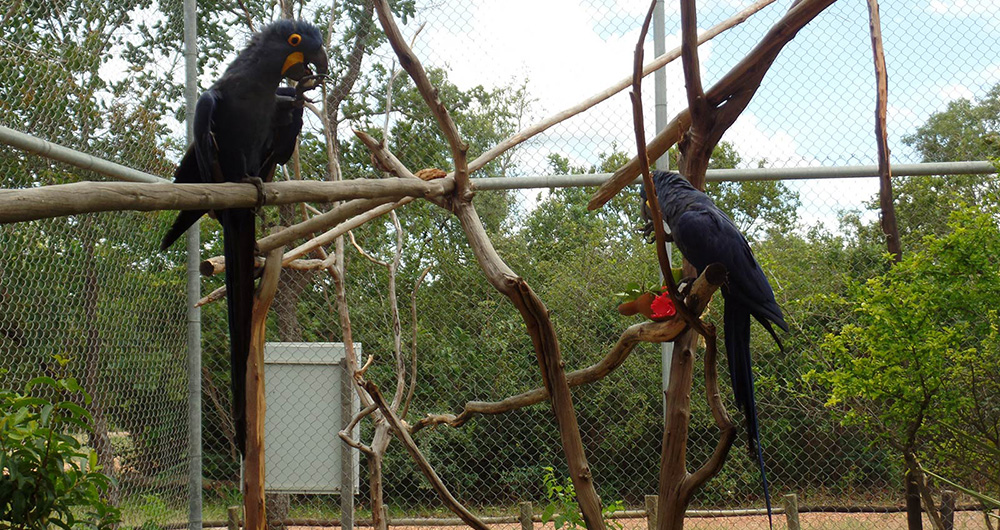
As early as March 2016, we had a new birth: a female marsh deer. Her name was chosen by Emmanuel Gayoso Filho, from Brasitrans, one of the oldest partners of the Park. He decided to call her Indira, in honor of Indira Gandhi, the first woman to be head of state in India and an icon in the fight against poverty.
In May, we celebrated the arrival of a baby anteater, proof that the animals find in the park the ideal conditions to live and breed. The name of the cub - Zeus - was chosen at the park's booth during the Bahia Farm Show.
During the year, we also continued with the Environmental Enrichment Program making the animals' habitats more interactive, complex and stimulant. The goal is to simulate situations that would occur in nature and thereby prevent the emergence of undesirable behaviors, reduce stress, promote well-being and increase the birth rate and longevity of the animals
"Changes were made directly in the structure of the enclosures, leaving them as close as possible to the natural environments; or in the routine of animals, with the introduction of new objects, the provision of food in different ways, the possibility of socialization, and more.
Maria Fernanda Naegeli Gondim, veterinarian of the park -
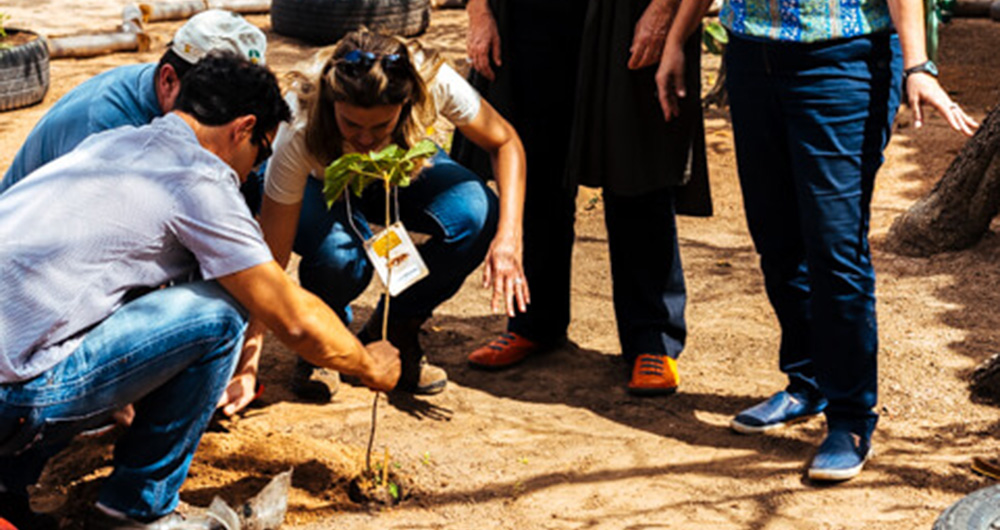
Responsible for the production of over 200,000 seedlings of cerrado native plants, handed out to the community and local farmers, the Seedling Nursery helped to recover large deforested areas and to beautify the squares and parks of Luís Eduardo Magalhães (BA).
In 2016, the project was reviewed and restructured. The plan is to continue to distribute seedlings (802 were donated this year) and, in addition, to strengthen the Seed Collector Network of Western Bahia. . The purpose of the network is to encourage the inhabitants of the rural communities of Luís Eduardo Magalhães to identify, value and collect seeds of native trees for the production of seedlings.
In April, we signed an agreement with Enel Green Power, which is building the Ituverava Solar Plant for the production of solar power. For the implementation of this project, the company created the Flora Rescue Program, which aims to restore the native vegetation cleared in the intervention areas of Ituverava. And that's where the park comes in. The company will ship the seeds collected at the plant site to the seedling nursery of the park.
-
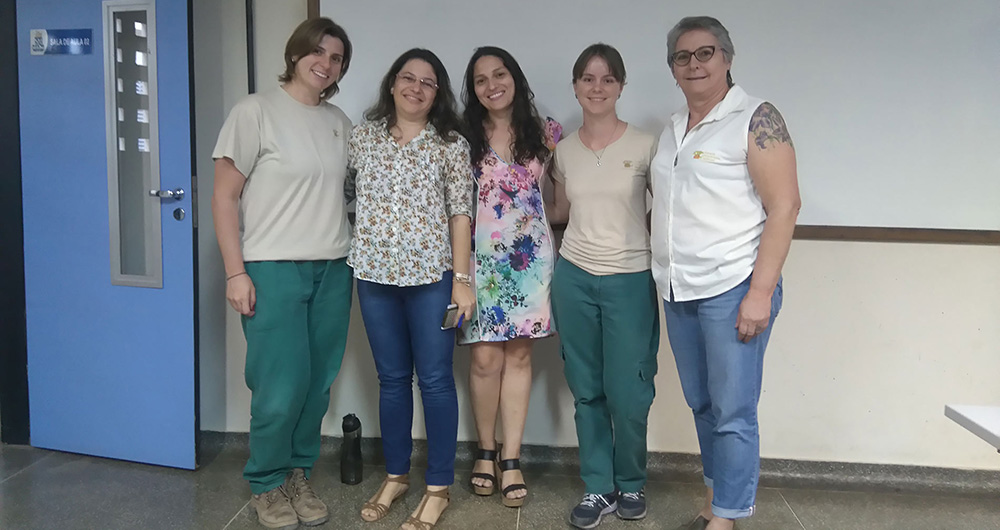
Sharing information and learning is in the DNA of the Fioravante Galvani Park. In 2016, we had the opportunity to make some important partnerships in this sense and participate in events that allowed the exchange of experiences, the dissemination of knowledge and the inclusion of the park in the hall of institutions that are a reference in its area of activity. Below there is a list of the year's main highlights:
Partnership with the Recriar Group In July, the park's Environmental Education efforts gained a new ally! Thanks to a partnership signed with Recriar, during one year the Park will have some time in the group's TV channels to present videos on Environmental Education and content related to the protection of the fauna and flora of the Cerrado, as well as institutional material that presents the park's history and the activities it develops.
In our quest to solve simple problems, we realize how important it is to make people aware that simple acts can improve and even save our planet. Locally, we seek to associate our brand with a credible institution that believes in and works for a better world and, in return, we have our media resources to inform the community about the important work done by the park.
Anna Paula Bueno, partner of the Recriar GroupExchange of Socioenvironmental Experiences In August, the park team participated in this meeting at the Territorial Center for Vocational Education of the Rio Grande Basin (CETEP), in Barreiras, Bahia. On the agenda, important topics for the cerrado of western Bahia, such as environmental education, family farming and the challenges faced by the population of the region. During the event, participants were able to exchange experiences on projects, challenges and dreams for local communities.
Partnership with the Federal University of Western Bahia The agreement signed with the university gave students the possibility of using the park to do their mandatory internship and to apply in practice the theoretical knowledge seen in classrooms, besides acquiring professional experience to better enter the labor market. Currently, the park is committed to receiving students from the areas of Biology and Veterinary. It also conducts activities in the areas of Environmental Education, Wildlife Biology and Veterinary Medicine of Wild Animals.
National Action Plan In November, in the city of Atibaia (SP), 28 organizations, among them the Fioravante Galvani Park, participated in a workshop to draft the National Action Plan (PAN) for the conservation of wild canids. The PAN is a guiding document for conservation actions. It integrates public policies for the conservation of biodiversity and is coordinated by the Chico Mendes Institute for Biodiversity Conservation (ICMBio). The plan was built by specialists, who point out the priority actions to improve the conservation status of the species. The PAN is valid for 5 years and is monitored during this period by the working group.
A QUESTION FOR...
Gabrielle Bes da Rosa, biologist at the Fioravante Galvani Park.
How important is the Action Plan for the conservation of wild canids?
It is part of Brazil-wide efforts and enables all the stakeholders to work together in actions and projects that complement each other according to the main risks. In this PAN, unlike the previous ones, efforts were made to align, in a single document, actions involving four different species. This greatly optimizes efforts, since the threats to them are usually the same. The plan has also been able to list specific actions for some of them, such as better mapping the areas of occurrence of the bush dog and the short-eared dog.
Fioravante Galvani Park
First and only center of conservation and environmental education of the Cerrado in Bahia.